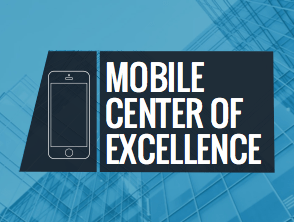3 key factors to your enterprise mobility success
In the last few years, use of mobile devices and apps in enterprises has rapidly grown. And today, in most organizations, mobile is omnipresent- in every department, process and function. While enterprises are realizing benefits from their mobile investments in terms of boosting their revenues, cutting costs, improving employee efficiency and customer engagement, there are still challenges ahead. Many enterprises are struggling to increase mobile adoption, bettering ROI from their investments and making the most from their mobile initiatives. Here are the 3 key factors to ensure bigger success for your enterprise mobility project :
- 1. Mobile CoE: You would not need a mobile center of excellence when you are planning your first mobile project. But as you get ready for a wider corporate roll-out encompassing hundreds of devices, multiple apps and mobility management software, a CoE becomes a must. Why? Mobility projects in the initial phases are siloed, i.e. restricted to a single department or few processes. The mobile implementation and usage is confined to a few people with little or no collaboration or knowledge transfer to others. However, as your mobile initiatives begin to spread out, you would need greater involvement and collaboration from people from diverse backgrounds. And an overall mobile strategy to spell out mobile policy and governance issues. The CoE will be the fulcrum around which your entire enterprise mobility project will revolve.
- 2. Apps for humans: Many companies struggle to understand that enterprise apps should be different than your desktop software. A mobile version of your enterprise software will not make the cut. User experience and practicality matters far more in the new mobile world. Your employees are used to simple, fast and responsive apps from their personal lives and therefore expect the enterprise apps to provide similar experience. Secondly, your enterprise apps must be practical; that helps your employees work faster and easier than before. To build valuable apps for employees, you would need to comprehensively understand their needs, existing pain-points and how an app could solve their problems.
- 3. Employee education: Whether you follow a BYOD or a corporate-owned device policy, employee education on mobile policy and best practices are a must. This will not only help your employees (people have varied mobile maturities) understand the true power of your enterprise mobility asset but will also help him make the best use of it. Moreover, with security being a key concern, it helps to layout the mobile usage policy and educate your employees in best practices to ensure security of your data and information. Share success stories, appoint ambassadors who can help you popularize mobility benefits across your organization.
It takes time to boost mobile adoption and build a mobile culture in your organization. But once done, you are ready to reap the benefits.
Image courtesy of KROMKRATHOG / FreeDigitalPhotos.net
Tags: enterprise mobility
![Blog-[x]cube LABS](https://d6fiz9tmzg8gn.cloudfront.net/wp-content/uploads/2016/06/blog_banner.jpg)


